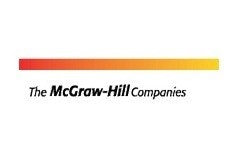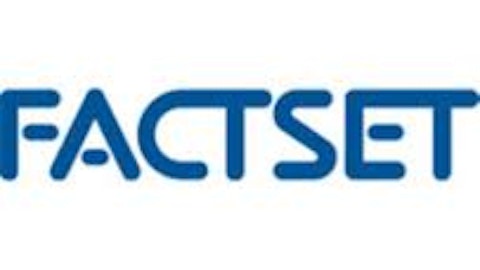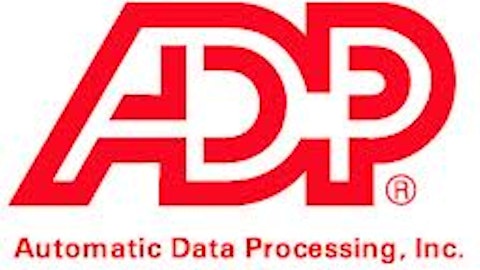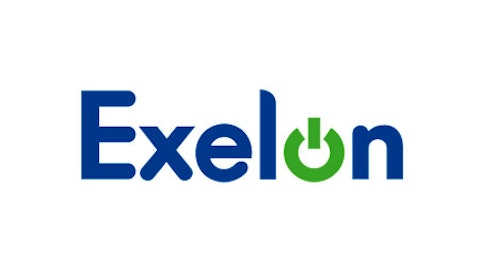
The stock price has since recovered, but is still far from its pre-announcement levels. Many contrarian investors have jumped in and started buying shares, arguing that the market has overreacted. Could they be right? Is it wise to buy this stock now?
With regards to valuation, The McGraw-Hill Companies, Inc. (NYSE:MHP) has a P/E of 19.98, just about the market’s average, but slightly higher than its main competitor Moody’s Corporation (NYSE:MCO). However, when factoring in future earnings estimates, McGraw’s forward P/E of 13.17 is attractive, and is also lower (albeit very slightly) than Moody’s Corporation (NYSE:MCO). When adjusting for growth, McGraw’s PEG is just 1.08, lower, and therefore more attractive than not only Moody’s Corporation (NYSE:MCO), but also the market average.
Analysts are moderately bullish on the stock: it has an average recommendation of 1.80 (buy/overweight), and an average price target of $58, which implies that the stock has an almost 22% upside potential from current price levels. Both average recommendation and implied upside from price targets are more attractive at The McGraw-Hill Companies, Inc. (NYSE:MHP)’s than at Moody’s Corporation (NYSE:MCO). It should also be noted that these analyst averages are not calculated exclusively from outdated reports that were published before the announcement of the lawsuit. Both The Benchmark Company and Barclays published reports in February, after the announcement, that, while lowering price targets from $64 to $57 and $54, respectively, rated the stock either a ‘buy’ (Benchmark Co) or an ‘overweight’ (Barclays).
The McGraw-Hill Companies, Inc. (NYSE:MHP) pays a dividend of $1.12 to its shareholders, which works out to a yield of 2.35% (higher than Moody’s Corporation (NYSE:MCO) 1.57%). A dividend has been paid to McGraw’s shareholders since August 1987.
| P/E | Fw P/E | PEG | Avg PT (% implied upside) | Avg Rec | Div Yield | Performance YTD | |
| MHP | 19.98 | 13.17 | 1.08 | $58 (+21.95%) | 1.80 | 2.35% | -12.48% |
| MCO | 16.76 | 13.20 | 1.26 | $50.88 (-0.14%) | 2.60 | 1.57% | 1.70% |
| Edge | MCO | MHP | MHP | MHP | MHP | MHP | – |
The Bearish and the Bullish Cases
On one hand, the most obvious bearish argument is that if the government ends up winning the lawsuit, the company would be shattered if forced to pay $5 billion. Considering that McGraw-Hill’s net income for last year was a little under $1 billion, a $5 billion fine could wipe the company off the map. Futhermore, even if the case is settled or the company exhonerated, the loss of credibility arising from the situation could harm McGraw’s businessess, as it runs precisely on the ability to offer objective, credible ratings.
On the other hand, bulls can argue that the market overreacted in early Feburary when the government announced the lawsuit. The company’s stock price fell almost 30% in two trading sessions, creating buying opportunities. As it turns out, the stock has recovered some ground, but is still far from its January levels. The fact of the matter is that the company is profitable, and earnings are expected to increase over the next several years. Furthermore, the company has over $1 billion in cash (which could be used to pay a settlement comfortably), and it pays a decent dividend. While the market has had excellent returns YTD, The McGraw-Hill Companies, Inc. (NYSE:MHP) has dropped almost 13%, and, if the case is won or settled, or the story starts to be forgotten, investors looking for bargains in this bull market could start driving McGraw-Hill’s stock price up again.
Bottom Line
Had the government not announced a lawsuit, The McGraw-Hill Companies, Inc. (NYSE:MHP)’s stock price would probably be inching closer to $60, following the bullish market trends. Instead, it is now trading at around $47, below its average target price of $58, and closer to its 52-wk low than its 52-wk high. The stock looks more attractive than its competitors, has bullish analysts, and should have a stable earnings outlook. Obviously, if the company is forced to pay the $5 billion fine, the earnings estimates, the forward P/E, the PEG, and all the other ratios based on them are meaningless, and the company could indeed be in serious trouble. At any rate, I believe that it is unlikely that the company will have to pay such a severe penalty, or even that the government can win this lawsuit. As a result, there could be some buying opportunities at current price levels. As with any contrarian play, however, investors should be cautious, and should understand the risks involved.
The article After the Plunge, Is it Time to Buy This Stock? originally appeared on Fool.com and is written by Alex Bastardas.
Copyright © 1995 – 2013 The Motley Fool, LLC. All rights reserved. The Motley Fool has a disclosure policy.




